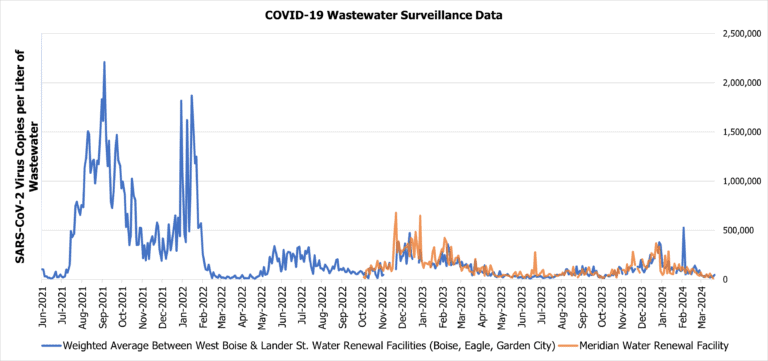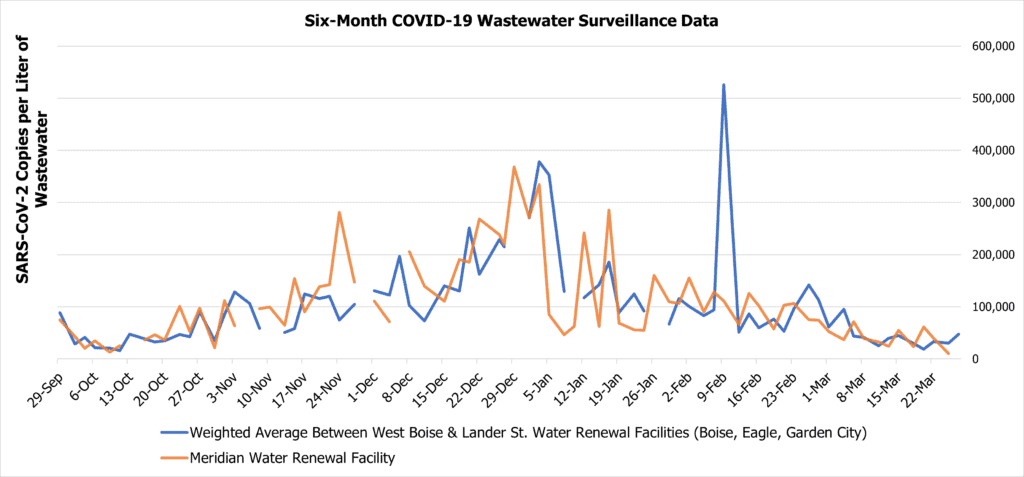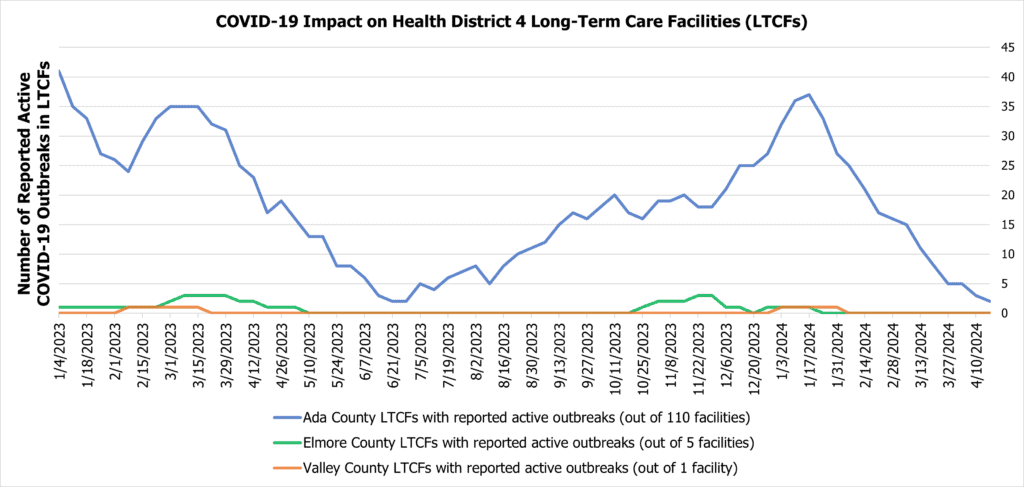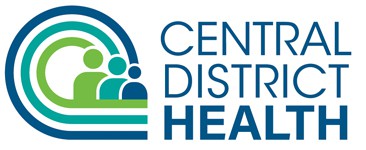COVID-19 surveillance data will be updated every Thursday by 5:00 p.m. unless otherwise noted. Wastewater data will be updated with all data that is available to CDH at the time of posting.
Wastewater Surveillance
Wastewater surveillance is a metric to track the presence of SARS-CoV-2 and other viruses in local sewer systems. People can shed SARS-CoV-2 viruses in their feces even if they have no symptoms.
Monitoring the concentration of viruses in wastewater is an early indicator of virus activity in our local area. Knowing the level of SARS-CoV-2 and other viruses in the wastewater can help individuals and communities decide which prevention actions to take based on the latest information.
There are currently three water renewal facilities actively collecting wastewater samples: West Boise, Lander St., and Meridian Water Renewal Facilities.

This graph represents all wastewater sample results available to CDH. The samples were collected from participating water renewal facilities in CDH jurisdiction. Gaps in the wastewater surveillance data lines indicate days where no samples were collected, or technical issues with samples at the lab occurred and the results were left out.

This graph represents the most recent wastewater concentrations for participating water renewal facilities over a rolling six-month period. Gaps in the wastewater surveillance data lines indicate days where no samples were collected or technical issues with samples at the lab occurred and the results were left out.
Long Term Care Facilities
With the expiration of the COVID-19 Public Health Emergency Declaration on May 11, 2023, CDH’s COVID-19 response efforts have shifted to focus on helping at-risk populations residing in congregate living settings.
Residents in long-term care facilities are especially vulnerable to severe outcomes of COVID-19 and other respiratory illnesses, and CDH is working to understand the impact of COVID-19 among residents and assist facilities in outbreak management when cases are identified.

This graph represents the total number of long-term care facilities (LTCFs) experiencing active COVID-19 outbreaks in CDH jurisdiction. An outbreak is declared when two or more COVID-19 cases among residents or staff members in a single facility are identified and reported to CDH. Boise County has no LTCFs and is not represented in the graph.
RESOURCES
COVID Data:
IDHW – Statewide Data Dashboard
CDC – COVID-19 by County
IDHW – Vaccine Dashboard
CDC – Data Tracker
Wastewater Data:
CDC – National Wastewater Surveillance System
City of Boise – Wastewater Testing
Wastewater Scan
Verily Wastewater Testing Dashboard
Resources for Long Term Care Facilities
CDC – Nursing Homes and Assisted Living (Long-term Care Facilities [LTCFs])
IDHW – Infection Prevention and Control Services
IDHW – Resources for Long-Term Care
CONTACT
Can’t find the information you need? Please complete the form or give us a call.

